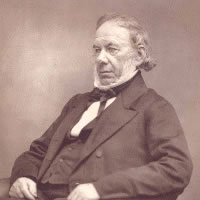John Mercer
John Mercer was an English dye and fabric chemist and fabric printer born in Great Harwood, Lancashire. In 1844 he developed a process for treating cotton, mercerisation, that improves many of its qualities for use in fabrics.
John Mercer never went to school, he learned basic reading and writing from his neighbour. He was very fond of dyeing. With the help of a chemistry textbook he taught himself the basics of the dyeing process. He continued to experiment, until he discovered Antimony orange. Late in his life, in 1844, he found that when cotton is treated with caustic chemicals, it became thicker and shorter – thereby stronger and shrink-resistant. Further, the cotton was more easily dyed, needed 30% less dye, more absorbant, and could be given an attractive silk-like lustre. He called his process mercerisation and patented it in 1850. Mercerisation was applied to many other materials, such as parchment and woolen fabric, and remains an important part of the cotton finishing process today.
Mercer was a pioneer of research into antimicrobials, preventing the spread of cholera in Sykeside in 1847 with chloride of lime, or ‘calcium hypochlorite’ which is today used to disinfect public swimming pools and drinking water.

John Mercer
Date of Birth: 21 Feb 1791
Birth Place: Great Harwood, Lancashire
Proffession: Dye and Fabric Chemist
Nationality: Lancashire
Death: 30 Nov 1866 at age 75


